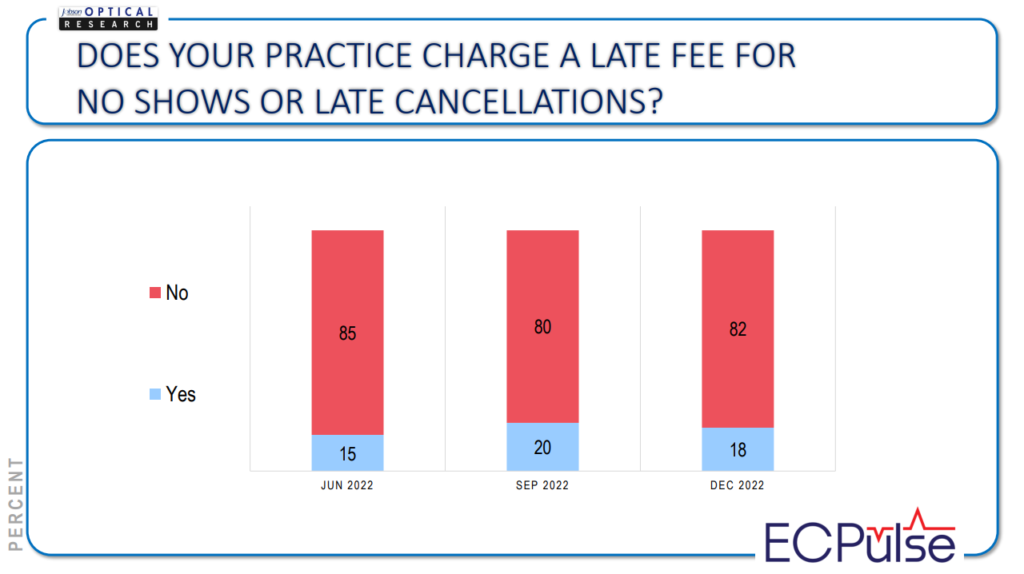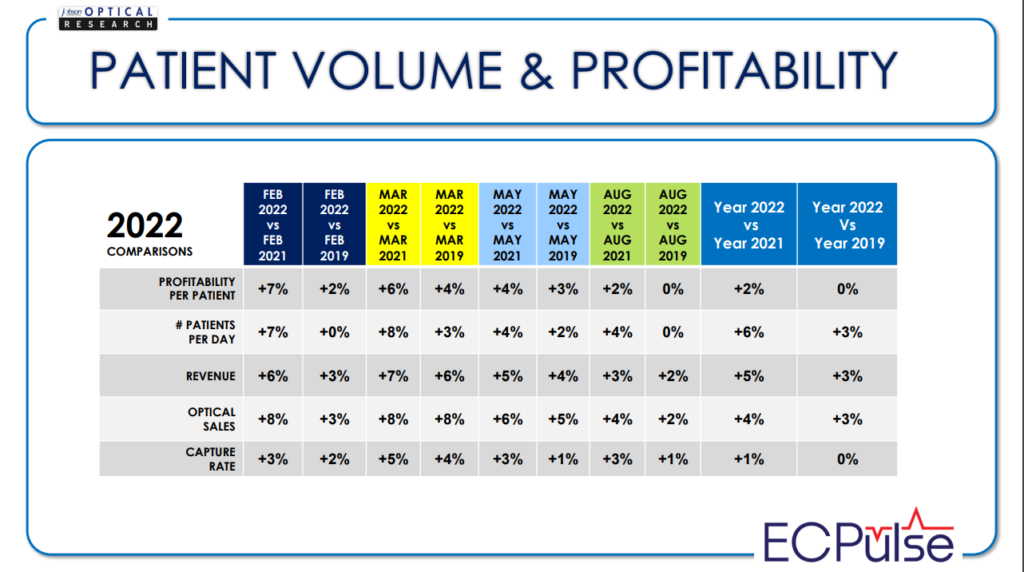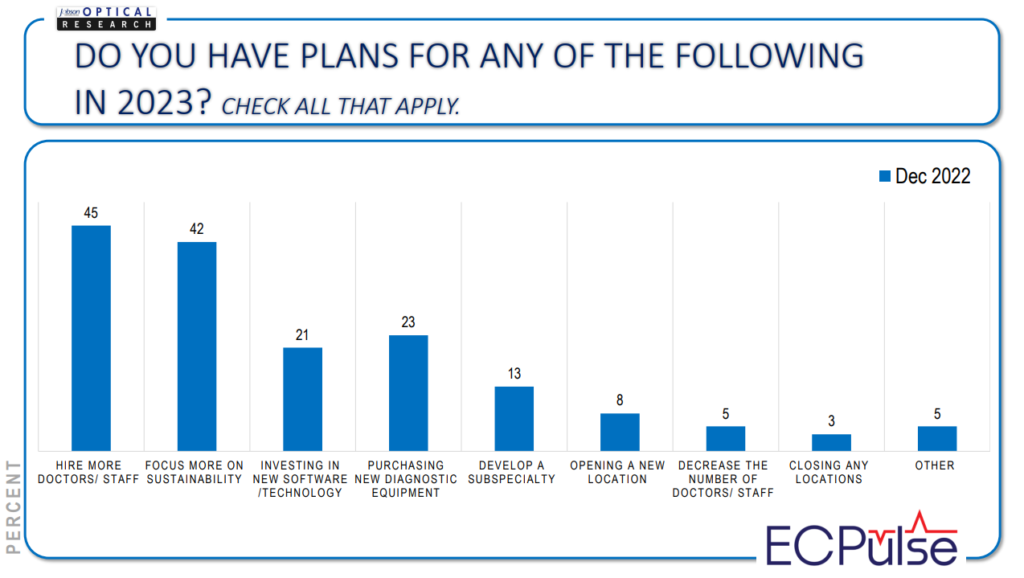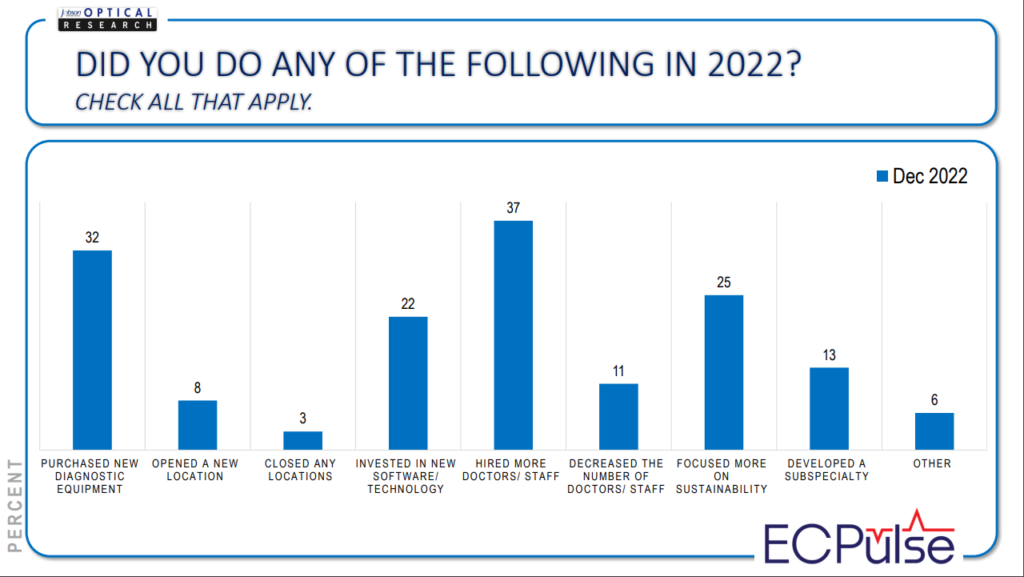According to the December 2022 ECPulse survey conducted by Jobson Optical Research, 83 percent of respondents said that they noticed that patients were trying to save money due to inflation. That’s a slight increase from 80 percent who agreed with that statement in the September 2022 survey.
The majority of respondents, 58 percent, said that their practices were only impacted slightly by the state of the economy, and four percent said they were not impacted at all. However, 38 percent said that their practices were impacted greatly by the economic situation.
The fourth quarter triggered some price increases among eye care providers. Fully 78 percent of respondents said they raised lens prices, and 69 percent said they raised frame prices. Fifty-five percent said they raised exam fees, and others noted that they were able to increase their profitability by reducing promotions (28 percent) or by increasing prices on accessories (18 percent). Overall, 29 percent said that day increase prices across the board and 49 percent said they increased prices in some areas.
In this survey, the third of the year, 43 percent of respondents said that their practice cut costs in 2022. The biggest cut was in reducing current product inventory (43 percent) and buying fewer new products (35 percent). Others noted that they reduced their giveaways to patients or their budgets for marketing and remodeling. Small percentages said that they reduced salaries for staff or associates (8 percent) or salaries for doctors (4 percent).


The revenue stream for practices stayed relatively steady throughout the three surveys of the year, with comprehensive routine exams and related sales accounting for 29 percent of practice revenue, on average. In December, the medical carrier reimbursements/co-pays dropped slightly to 26 percent (down from 28 percent in the earlier two surveys), while service not covered by vision benefits or medical insurance rose slightly to 26 percent, up from 23 percent in the previous surveys. Overall, 37 percent of respondents said they felt more patients used managed vision care in 2022 than in previous years.
INCREASED NEEDS
The survey found that eye care professionals did notice increases in patient needs.
- 80 percent said they noted an increase in need for computer/blue light glasses.
- 71 percent said they noted an increase in the need for dry eye testing and treatment.
- 65 percent said they noted an increase in interest in antireflective treatments.
However, while 41 percent said that they saw more need for diabetes-related eye care, 58 percent said they saw no changes in that area. Similarly, the need for photochromic lenses was unchanged (57 percent) and sports eyewear (70 percent).
By late December, eye care professionals reported that they were ending 2022 ahead of 2021 in all major areas: profitability per patient (up 2 percent); number of patients per day (up 6 percent); revenue (up 5 percent); optical sales (up 4 percent); and capture rate (up 1 percent). In terms of patients per day, revenue and optical sales, respondents reported an average increase of 3 percent over 2019, the year before the COVID-19 pandemic began in earnest.


However, in terms of profitability per patient and capture rate, respondents said on average they had just regained 2019 levels.
LOOKING AHEAD
Eye care professionals seem ready to make some changes in 2023. This chart shows some of the plans they have for the coming year.


Many eye care professionals did take similar actions in 2022, with more than one-third hiring additional doctors or staff and nearly one-third purchasing diagnostic equipment.


Readers can download the entire report here.



